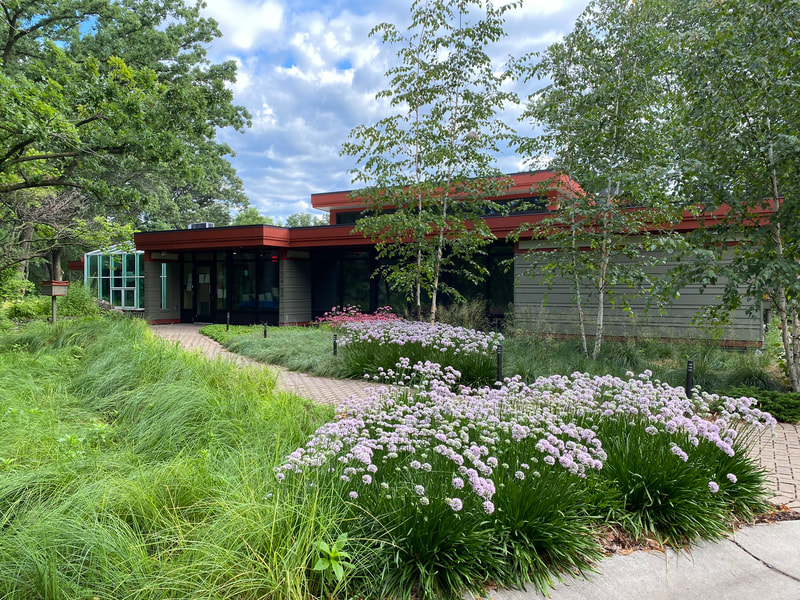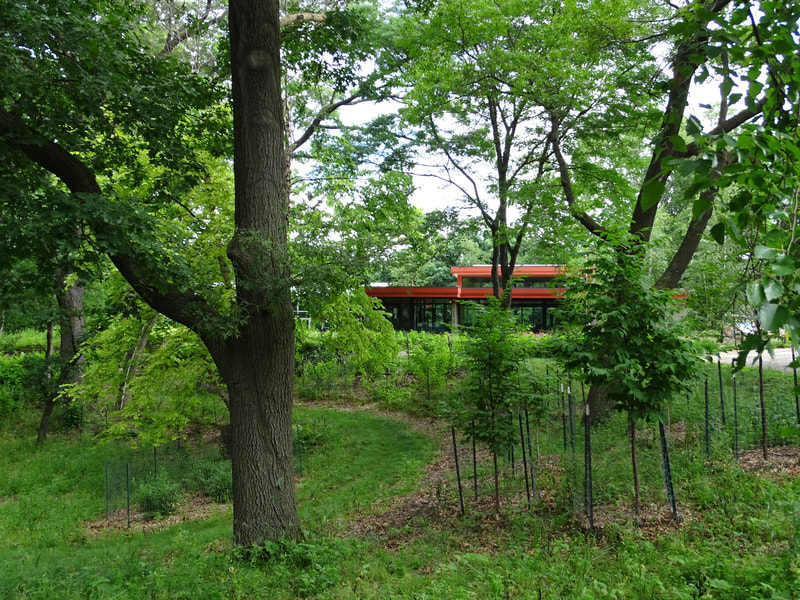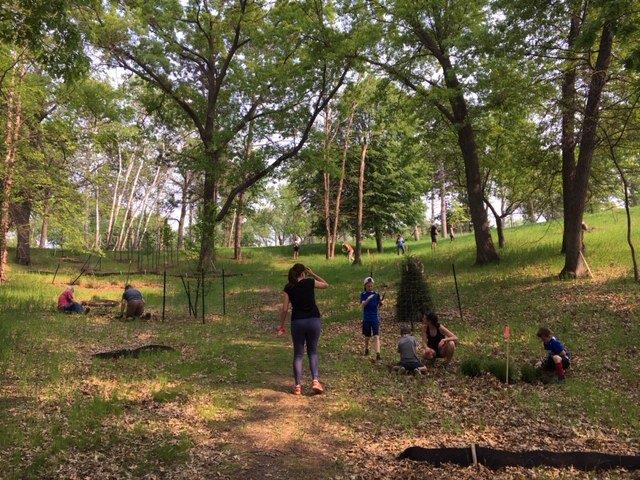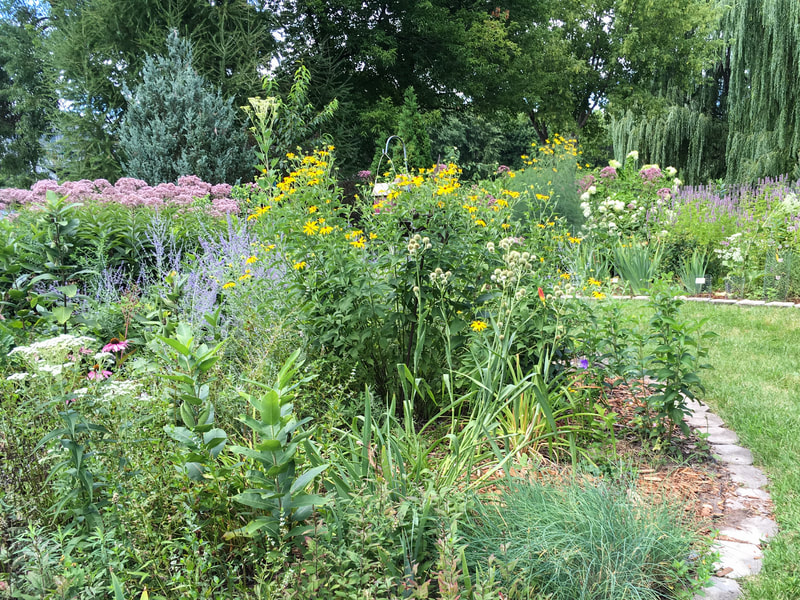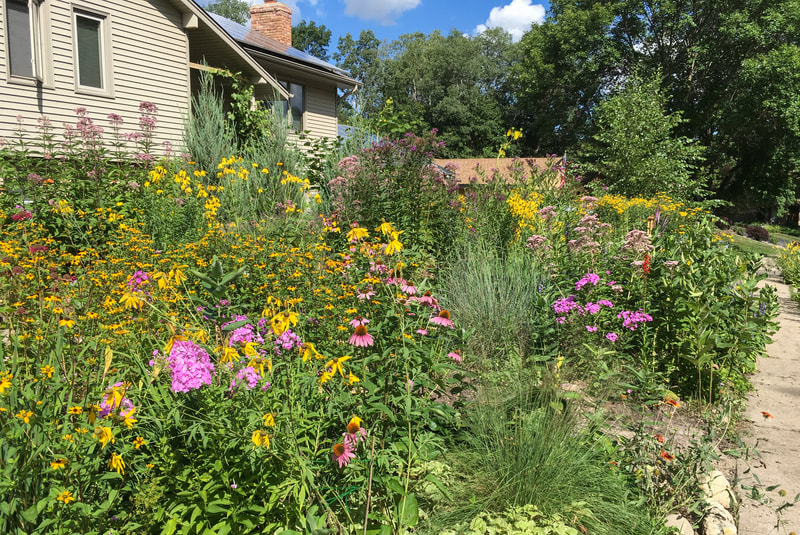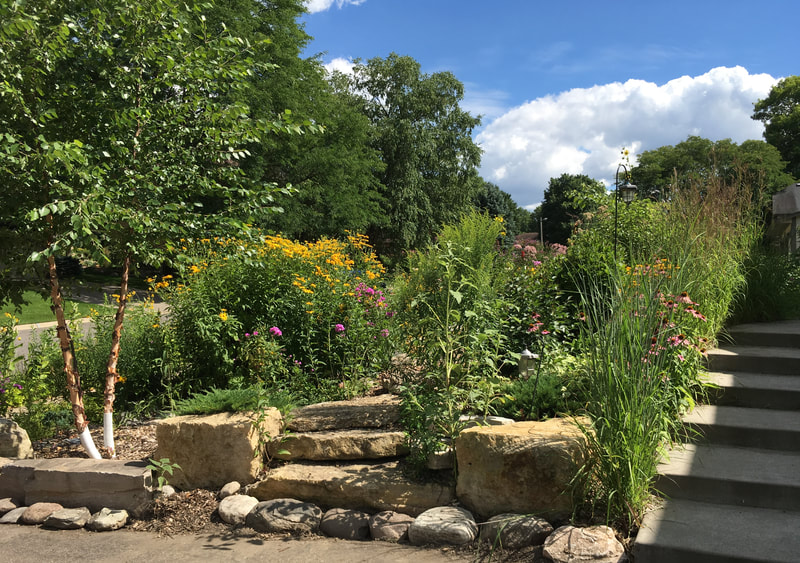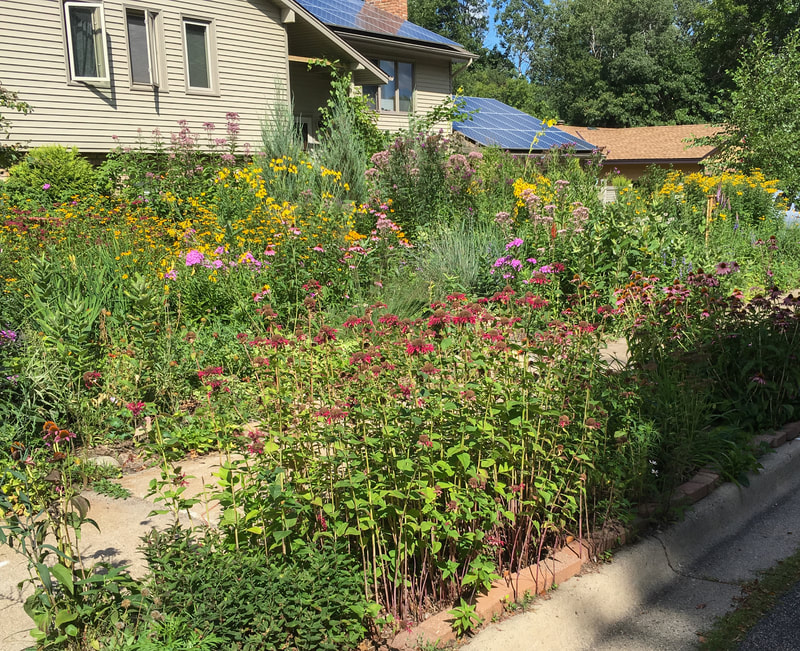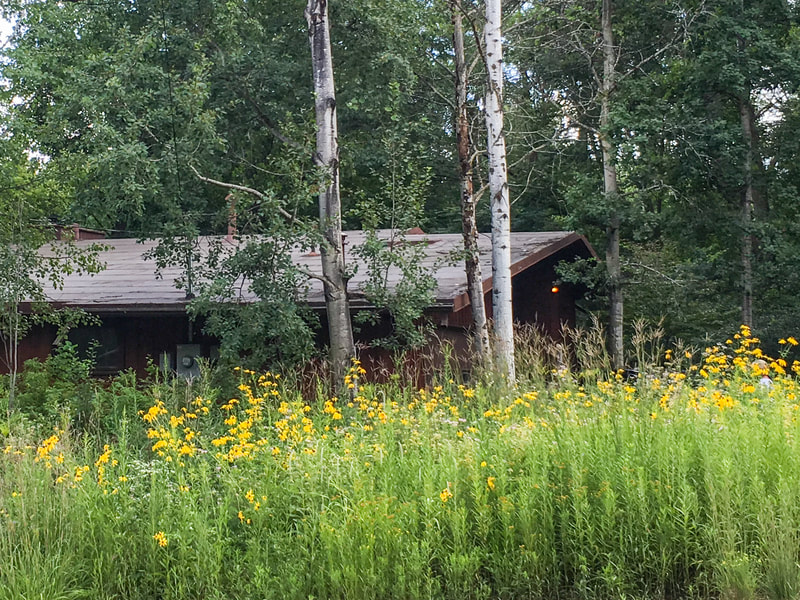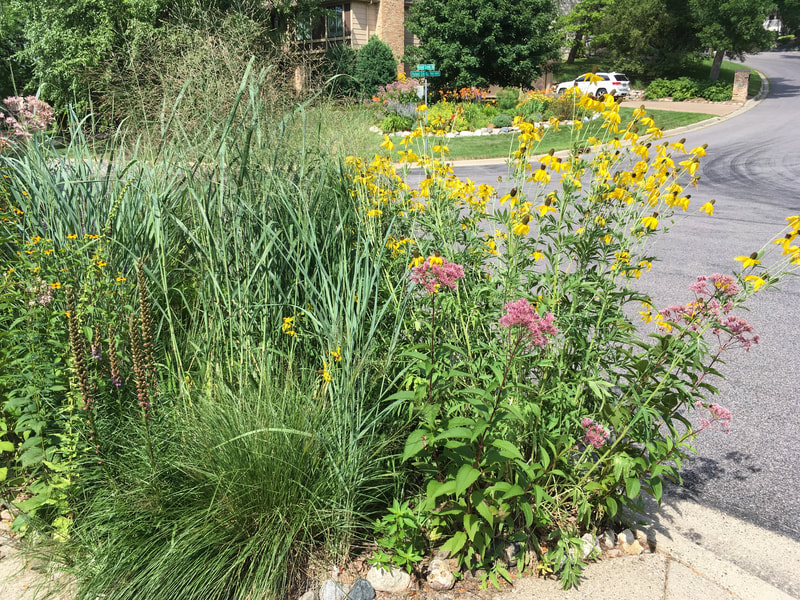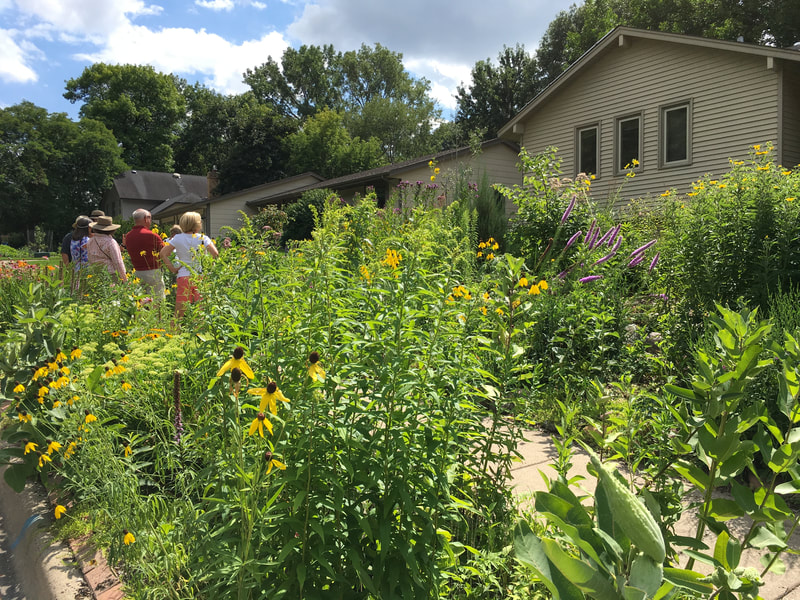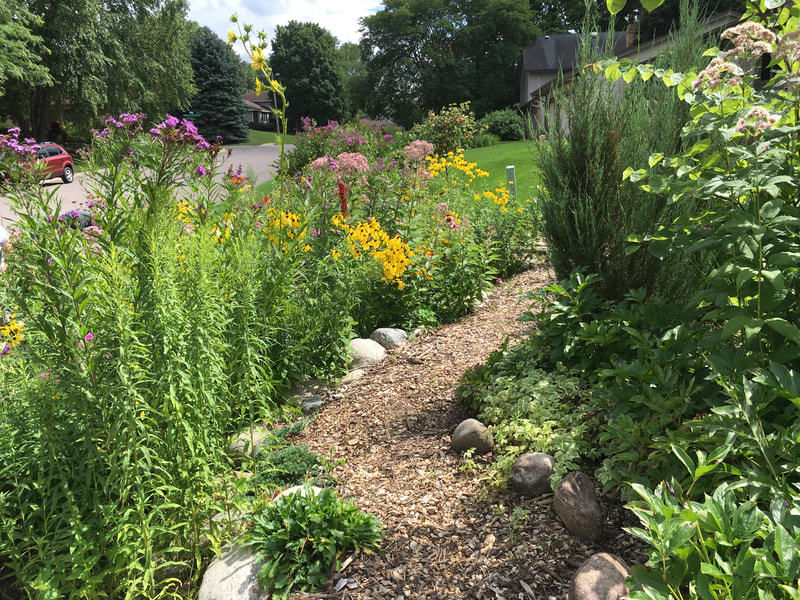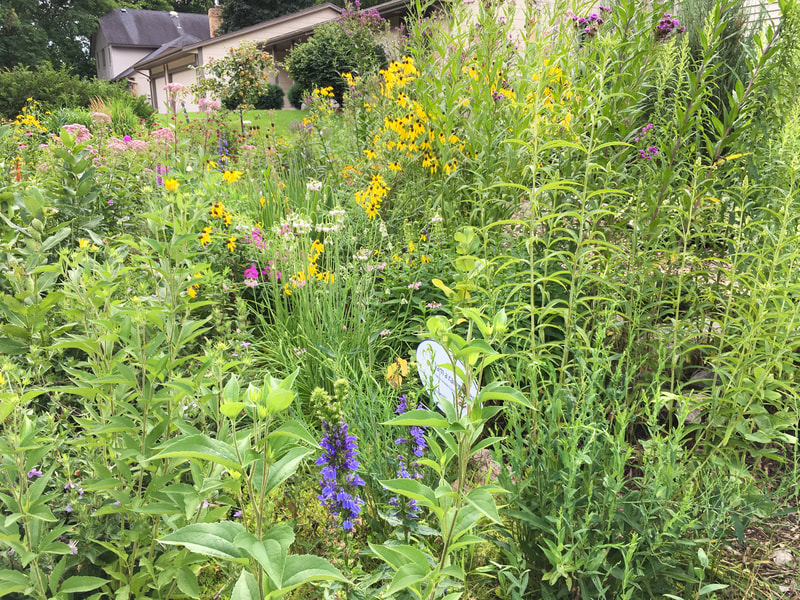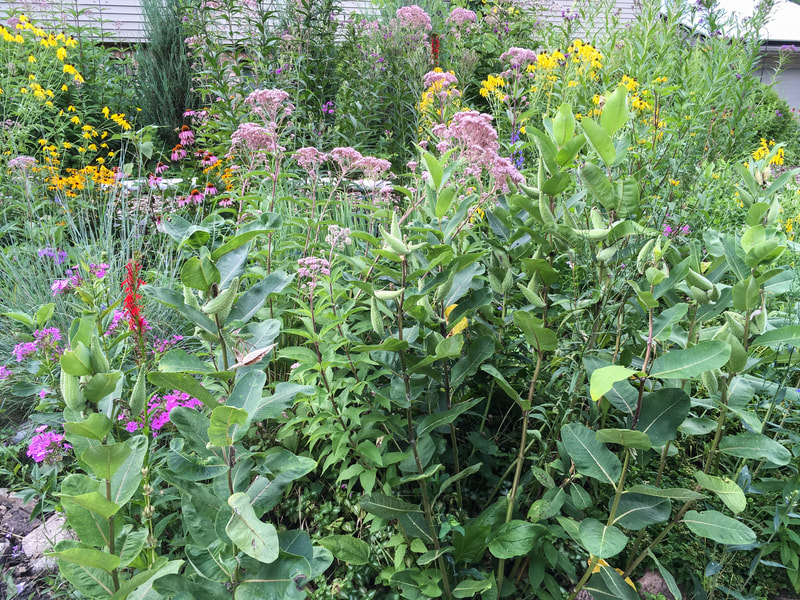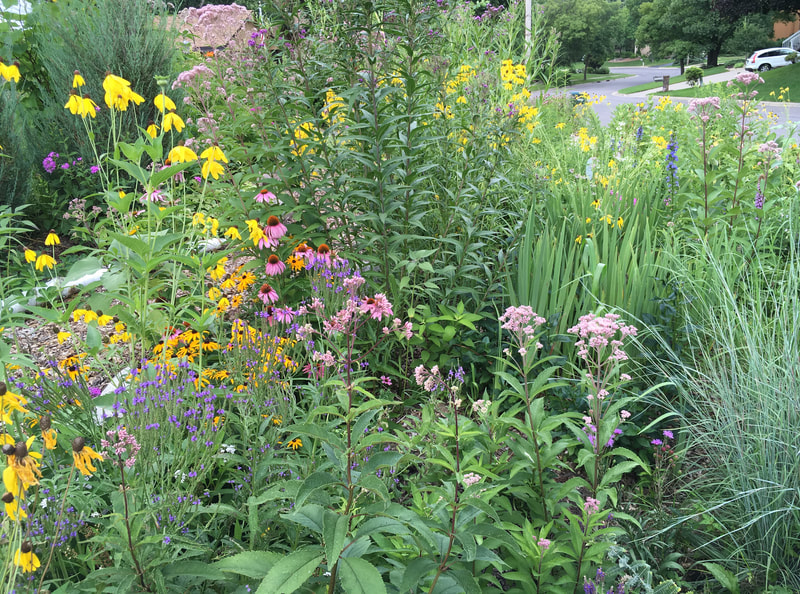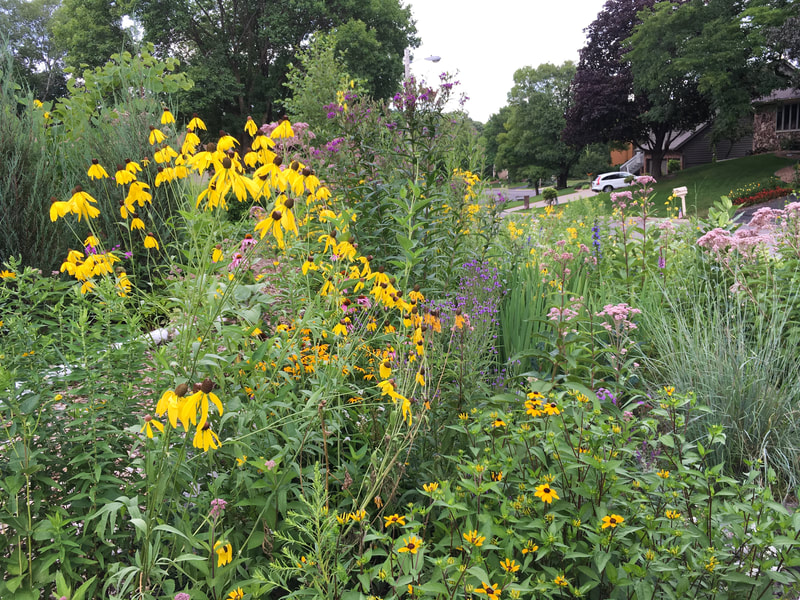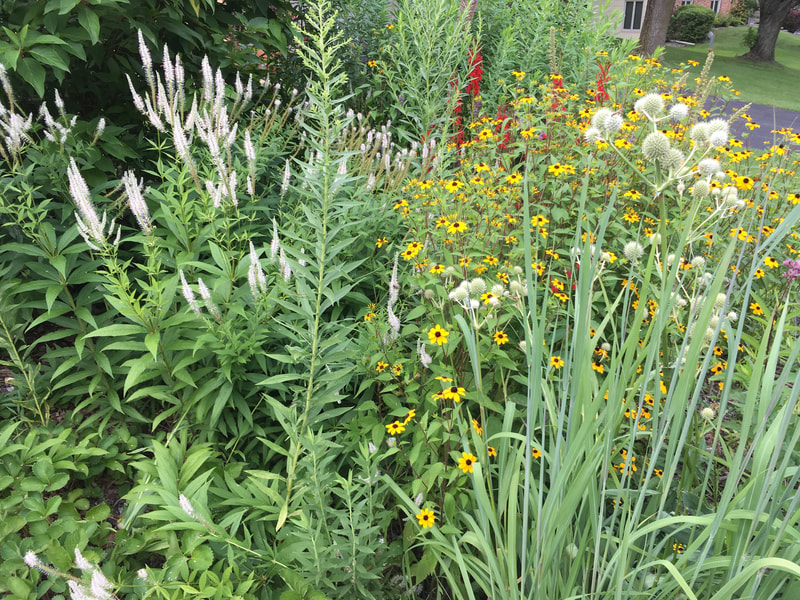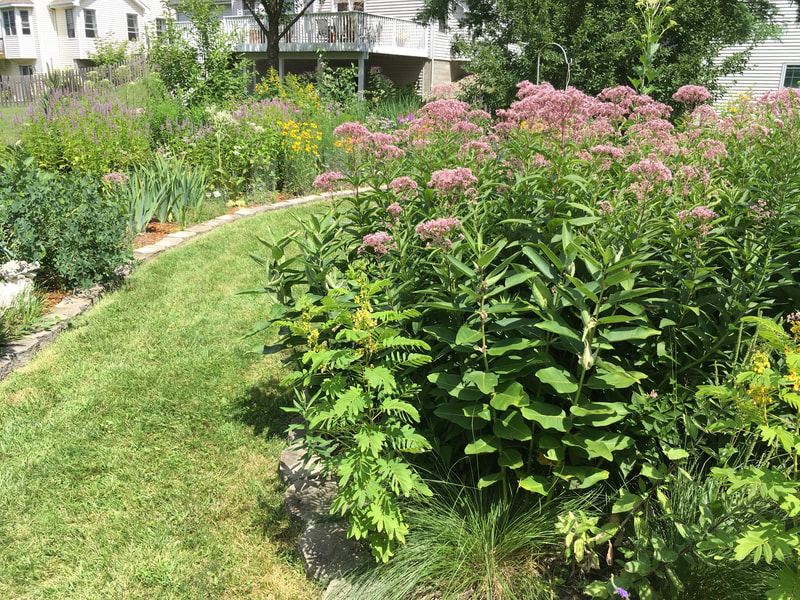We host free monthly tours of residential native plant gardens or local plant communities from May – August.
Currently seeking native plant landscaping to tour in 2024
Throughout the growing season, we sponsor native plant landscape tours to inspire and educate our members. We are looking for gardens or demonstration sites that are 60% or more natives. If you are willing to have your yard on tour or know of someone that would be willing to share their project, please contact: [email protected]
July 2024
A tour of Two Carver County Residences
(more details forthcoming)
Saturday, July 13th from 9:20-Noon
Rain date: Sunday, July 14th 9:20-Noon
Judy's Prairie in the Country
Meet at Community Park at 9:20am
Community Park, 800 6th St W, Carver, MN 55315
Due to limited parking at Judy's, we will carpool one half mile to Judy's house.
Judy is a U of M Extension Master Gardener and prairie enthusiast whose property consists of 15 acres of bluffs/woods and previously farmed open space. Over the past 9 years, she has created 5.5 acres of full sun prairie habitat using neary150 species of native forbs and grasses. A native of Iowa, Judy has an association with the University of Northern Iowa’s Tallgrass Prairie Center and has taken their Botany Beginner classes on Native Forbs, Grasses, and Weed identification. With the recent rains the newest prairie planted in June 2023 is now germinating.
Water issues have developed over the past 5 years - related to the high water table on the property, resulting in newly established ‘wetlands' with Native bog plants emerging. Judy notes that the Prairies are always changing and evolving..
Please note that you might want to wear waterproof shoes, but you can also view the prairie from high & dry areas.
A tour of Two Carver County Residences
(more details forthcoming)
Saturday, July 13th from 9:20-Noon
Rain date: Sunday, July 14th 9:20-Noon
Judy's Prairie in the Country
Meet at Community Park at 9:20am
Community Park, 800 6th St W, Carver, MN 55315
Due to limited parking at Judy's, we will carpool one half mile to Judy's house.
Judy is a U of M Extension Master Gardener and prairie enthusiast whose property consists of 15 acres of bluffs/woods and previously farmed open space. Over the past 9 years, she has created 5.5 acres of full sun prairie habitat using neary150 species of native forbs and grasses. A native of Iowa, Judy has an association with the University of Northern Iowa’s Tallgrass Prairie Center and has taken their Botany Beginner classes on Native Forbs, Grasses, and Weed identification. With the recent rains the newest prairie planted in June 2023 is now germinating.
Water issues have developed over the past 5 years - related to the high water table on the property, resulting in newly established ‘wetlands' with Native bog plants emerging. Judy notes that the Prairies are always changing and evolving..
Please note that you might want to wear waterproof shoes, but you can also view the prairie from high & dry areas.
at 10:30 we will carpool back to the Community Park and drive 3 miles to
Doreen's Suburban Sanctuary
Chaska MN 55318
Doreen converted her lawn to natives around 12 years ago and continues to add
new species. Recent additions include fringed puccoon (Lithospermum incisum),
Blue-stemmed goldenrod (Solidago caesia) which tolerates shade and is not
aggressive, and Pale Corydalis (Corydalis sempervirens). Another try at Wood
Lily (Lilium philadelphicum) resulted in 2 blooming plants this year. Her favorite
miniature plants include Fame Flower (Talinum parviflorum and T. rugospermum),
Longleaf Bluets (Houstonia longifolia) and Lavendar Oxalis (Oxalis violacea).
Doreen is keen on garden decor, using it to add a semblance of order to robust
natives that constantly move about.
Doreen's Suburban Sanctuary
Chaska MN 55318
Doreen converted her lawn to natives around 12 years ago and continues to add
new species. Recent additions include fringed puccoon (Lithospermum incisum),
Blue-stemmed goldenrod (Solidago caesia) which tolerates shade and is not
aggressive, and Pale Corydalis (Corydalis sempervirens). Another try at Wood
Lily (Lilium philadelphicum) resulted in 2 blooming plants this year. Her favorite
miniature plants include Fame Flower (Talinum parviflorum and T. rugospermum),
Longleaf Bluets (Houstonia longifolia) and Lavendar Oxalis (Oxalis violacea).
Doreen is keen on garden decor, using it to add a semblance of order to robust
natives that constantly move about.
To continue your Carver County Exploration, at 11:30 proceed to the Carver County Government Building at 600 E. 4th St. Chaska. There are some native plantings in front but the majority of the plantings are in back of the building by the shoreline of Courthouse Lake.
Beautiful natural spaces to explore in the area:
Chaska and Carver are in the Minnesota River Valley. Before or after the tour, you might like to walk or bike part of the extensive trail system in the area. Major nature areas include Carver Park Reserve, part of the Three Rivers Park District;
Lake Minnewashta Regional Park, Minnesota Valley National Wildlife Refuge which includes the Carver Rapids, Chaska, and Louisville Swamp Units; UofM Arboretum (gate fee; advance tickets recommended), Spring Peeper Meadow
(free, part of the UofM Arboretum).
Chaska and Carver are in the Minnesota River Valley. Before or after the tour, you might like to walk or bike part of the extensive trail system in the area. Major nature areas include Carver Park Reserve, part of the Three Rivers Park District;
Lake Minnewashta Regional Park, Minnesota Valley National Wildlife Refuge which includes the Carver Rapids, Chaska, and Louisville Swamp Units; UofM Arboretum (gate fee; advance tickets recommended), Spring Peeper Meadow
(free, part of the UofM Arboretum).
August 2023
Friday, August 9th 2-4 pm with Gael Zembal
and Monday, August 12th 6-8pm with Marilynn Torkelson
Nine Mile Creek Watershed District's
Discovery Point
12800 Gerard Dr, Eden Prairie, MN 55346
Gael Zembal, Education & Outreach Coordinator for NMCWD will lead the Friday daytime tour.
For those who can't make a daytime tour, we'll have a second tour on Monday evening, sharing the same information.
The 5-acre, wooded site is located in a residential neighborhood in Eden Prairie overlooking the Cardinal Creek Conservation Area. Discovery Point provides visitors with direct and memorable experiences with stormwater management and conservation–in both residential and commercial settings. Working stormwater structures and artful landscape features provide opportunities to learn while enjoying peaceful surroundings.
The land and original home on the site were donated to the Nine Mile Creek Watershed District by Barbara Kaerwer, a longtime Eden Prairie resident. The District renovated and added to the house and began operating there in late 2014. Barbara dedicated her life to protecting the natural environment. Through her tremendous act of kindness, Discovery Point has become a place for all visitors to learn how to be good stewards of the land.
At Discovery Point, through an ongoing process, we are restoring native plant communities and removing invasive species, such as buckthorn, non-native honeysuckle, burdock, and garlic mustard. In February 2017, the first phase of restoration began on the southeastern portion of the property.
Saturday, August 17th 10 am
George and Bernice Watson's Residence
Lakeville, MN
When we moved here in August of 1987, it was a bare lot. Since then, we've have added
over 40 trees to the canopy and subcanopy. Progressing from the front yard to the back, the
percentage of natives in a garden increases as more recent additions are in the back. The rear of the property abuts the Foxborough Conservation Area. It a blessing to enjoy the wildlife, but also a struggle to minimize
browsing by deer and rabbits.
The woodland shade garden on the east side of the house is inspired by a trip to Voyageurs National Park in northern Minnesota. Continuing on the east side of the house, we added a rain barrel that overflows to a functional dry stream bed.
This flows toward the back of the property, across a ford, and then into the first pond. The ponds function similar to rain
gardens and incorporate rock filled basins surrounded by plants to give the sense of water when dry similar to that of a
Japanese garden. The first pond overflows into another stream to the second pond, which in turn overflows
into another stream, under a bridge and into a third pond that was converted to a bog last year. The bog was created because of the desire to grow plants, such as Marsh Marigolds, that thrive in a wetter environment.
Seven years ago, we were inspired on a garden tour by a hillside prairie planting and decided to replace the turf on the steep slope that was dangerous to mow. Now there are two beautiful hillside Pollinator Prairie Gardens.
We also looked to undisturbed native areas in the neighborhood. George took an inventory of
those areas and determined per the reference, Field Guide to the Native Plant Communities of
Minnesota The Eastern Broadleaf Forest Province, that their home is in the Southern Mesic Oak-Basswood Forest floristic region. We have been using that plant community list for our recent plantings.
We hope you enjoy the tour,
George and Bernice
©2024 Wild Ones Prairie Edge








